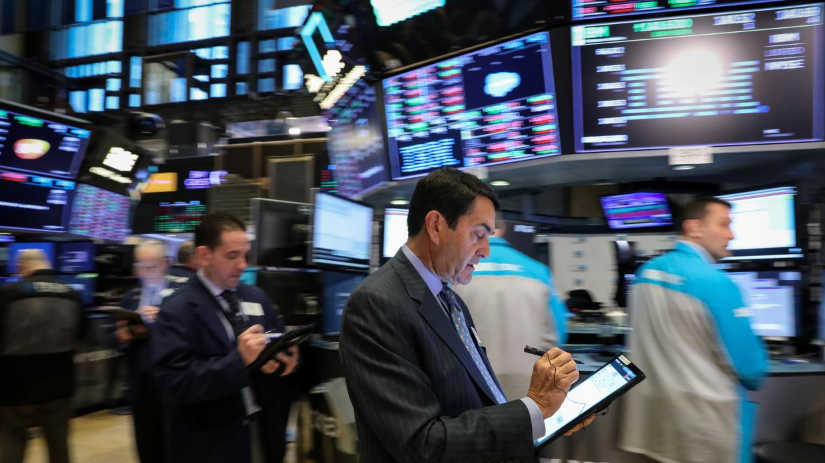
The Dow Jones Industrial Average triggered a technical signal on Tuesday that many investors believe could portend more gains for stocks in the short term, known as the golden cross.
The chart pattern comes about when a short-term moving average moves above a longer-term moving average. Moving averages are popular trend indicators used by technical analysts.
In the case of the Dow on Tuesday, the 50-day moving average crossed above the index’s 200-day moving average, which is the most widely watched combination among technicians. Some analysts employ additional criteria in determining whether a cross is triggered, for example, if both moving averages are sloping upward, which the Dow’s currently are.
Even with the Dow’s slightly lower close on Tuesday on trade concerns, the 50-day managed to end the session above the 200-day moving average.
Other major indexes, such as the S&P 500 and Nasdaq, have moved closer to a golden cross as stocks continue to rally off their late December lows, buoyed by a Federal Reserve pause in interest rate hikes and building investor optimism for a trade deal between the U.S. and China.
“All signs are pointing towards continued good performance, and the golden cross just accentuates that because that is another positive story,” said Ken Polcari, managing principal at Butcher Joseph Asset Management in New York.
Polcari said the cross should not be looked at in a vacuum, however, and pointed to gains in the S&P 500 and Nasdaq that have lifted those indexes above their highs from early March as further evidence the market is strengthening.
“You have to look at it in the context of some of the other indicators,” Polcari said.
On Dec. 7, the S&P 500 triggered a bearish counterpart, known as a “death cross,” when the 50-day moving average fell below the 200-day. The benchmark index went down another nearly 11 percent before bottoming on Dec. 24.
The Dow last triggered a golden cross on April 19, 2016 and closed out the year 9.5 percent higher from there.
Still, the golden cross is far from a bulletproof signal. According to Sam Stovall, chief investment strategist at CFRA Research in New York, using a “golden cross” strategy yielded a lower return than the compound annual growth rates for the Dow and smallcap Russell 2000 index since 1990.
The results were different for the S&P 500, however, with the “golden cross” strategy yielding returns similar to the index while also enabling investors to avoid major sell-offs and bouts of volatility.
Since 2000, the biggest drop yearly using a cross strategy would be 6 percent versus 38 percent for the index. In addition, the strategy topped the performance of the index 55 percent of the time.
As a result, Stovall thinks the strategy could be feasible for an investor depending on what their goal is.
“In many ways (technical analysis) is an interpretive science. I think it is a good one, but not everybody interprets the pattern the same way,” he said.
